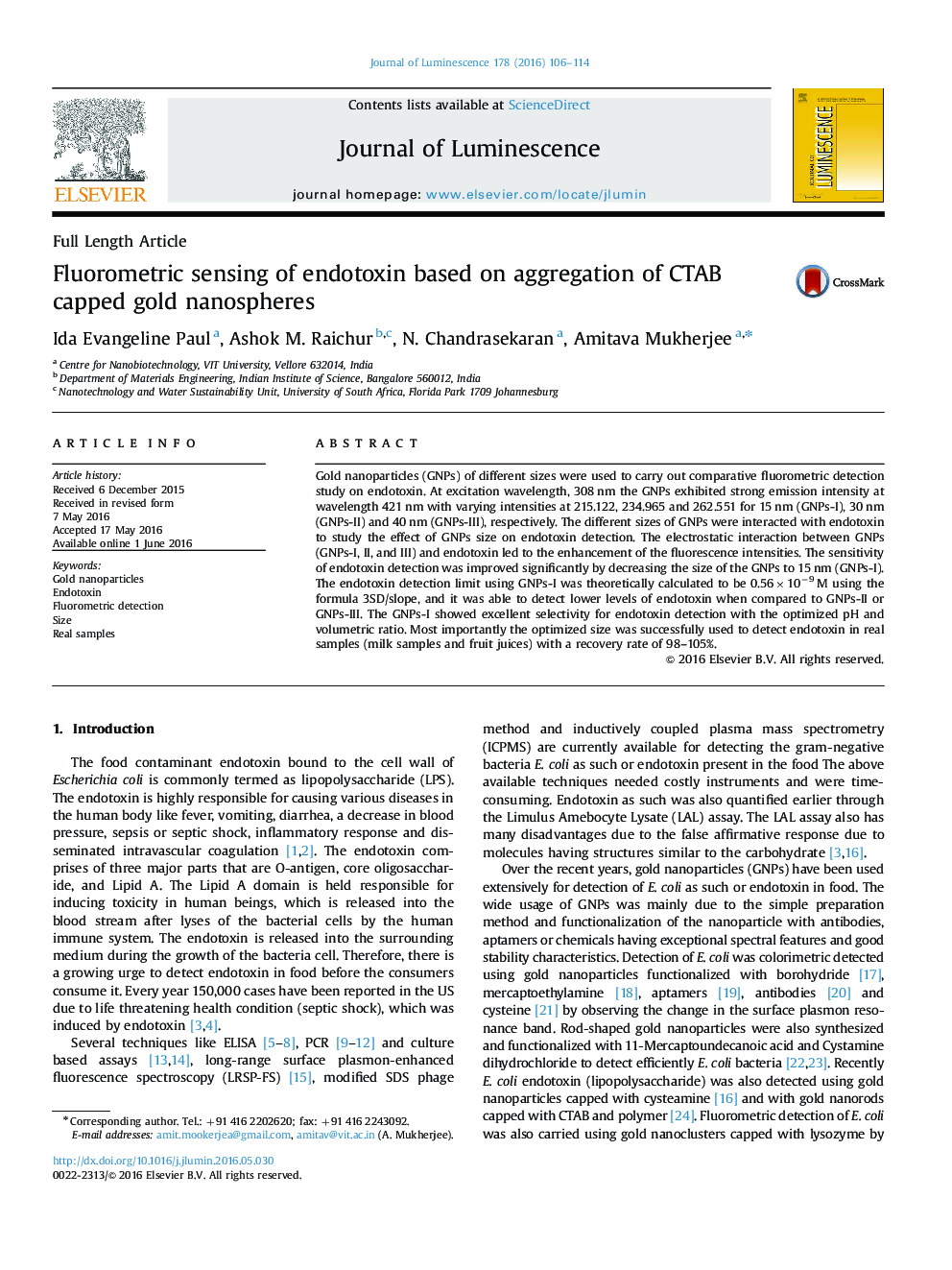| Article ID | Journal | Published Year | Pages | File Type |
|---|---|---|---|---|
| 5398398 | Journal of Luminescence | 2016 | 9 Pages |
Abstract
Gold nanoparticles (GNPs) of different sizes were used to carry out comparative fluorometric detection study on endotoxin. At excitation wavelength, 308Â nm the GNPs exhibited strong emission intensity at wavelength 421Â nm with varying intensities at 215.122, 234.965 and 262.551 for 15Â nm (GNPs-I), 30Â nm (GNPs-II) and 40Â nm (GNPs-III), respectively. The different sizes of GNPs were interacted with endotoxin to study the effect of GNPs size on endotoxin detection. The electrostatic interaction between GNPs (GNPs-I, II, and III) and endotoxin led to the enhancement of the fluorescence intensities. The sensitivity of endotoxin detection was improved significantly by decreasing the size of the GNPs to 15Â nm (GNPs-I). The endotoxin detection limit using GNPs-I was theoretically calculated to be 0.56Ã10â9Â M using the formula 3SD/slope, and it was able to detect lower levels of endotoxin when compared to GNPs-II or GNPs-III. The GNPs-I showed excellent selectivity for endotoxin detection with the optimized pH and volumetric ratio. Most importantly the optimized size was successfully used to detect endotoxin in real samples (milk samples and fruit juices) with a recovery rate of 98-105%.
Related Topics
Physical Sciences and Engineering
Chemistry
Physical and Theoretical Chemistry
Authors
Ida Evangeline Paul, Ashok M. Raichur, N. Chandrasekaran, Amitava Mukherjee,
